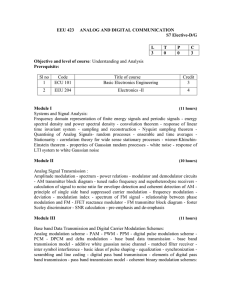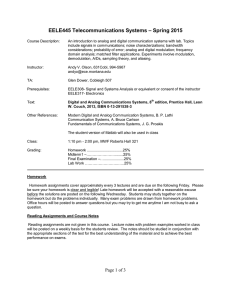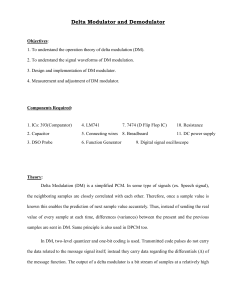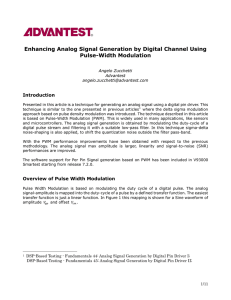Delta Modulation Professor: Dr. Miguel Alonso Jr.
advertisement
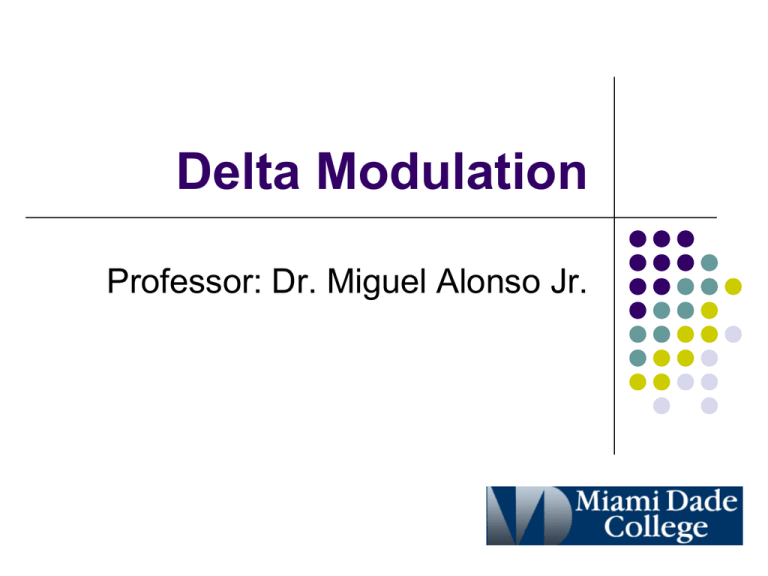
Delta Modulation Professor: Dr. Miguel Alonso Jr. Outline Delta Modulation Continuously variable slope delta modulation Demodulation Delta Modulation Next form of pulse modulation Transmits information only to indicate whether the analog signal that is being encoded goes up or goes down The Encoder Outputs are highs or lows that “instruct” whether to go up or down, respectively DM takes advantage of the fact that voice signals do not change abruptly The analog signal is quantized by a one-bit ADC (a comparator implemented as a comparator) The comparator output is converted back to an analog signal with a 1-bit DAC, and subtracted from the input after passing through an integrator The shape of the analog signal is transmitted as follows: a "1" indicates that a positive excursion has occurred since the last sample, and a "0" indicates that a negative excursion has occurred since the last sample. DM Block Diagram Resulting Waveforms Simple Implementation of a DM system Limitations of the system Slope overload When the analog signal has a high rate of change, the DM can “fall behind” and a distorted output occurs Tradeoffs Simplicity versus Quality In order to obtain the high quality DM requires very high sampling rates, typically 20× the highest frequency of interest, as opposed to Nyquist rate of 2×
![Analogue digital converter Assignment 01 [Updated] Spring 2020](http://s3.studylib.net/store/data/025357219_1-44789d49d8c096f173a635a9f4c20d9f-300x300.png)



